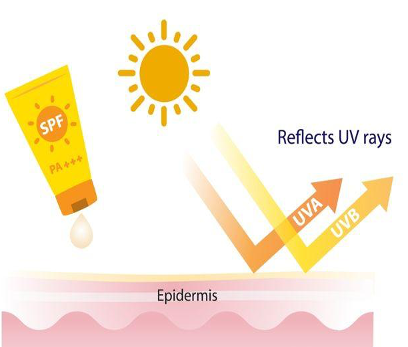Apr 19th - 2 Min Read
Sun Damage on the Body and How To Prevent It
By: Ayat AbdulhameedAs summer is on the way and the sun appears at its highest elevation, it's important to know that our bodies are made to make good use of the sun. The sun rays help boost the body's vitamin D, keep our sleep pattern on track, and heal inflammation. But too much exposure to several sun rays can severely damage our skin, causing skin cancer, sunstroke, decreased elasticity, and hyperpigmentation. Energy from the sun reaches the earth as visible, infrared, and ultraviolet rays, ultraviolet A (UVA) is made up of wavelengths 230 to 400 nm in length, the ultraviolet B (UVB) wavelengths are 280 to 320 nm, and the ultraviolet C (CVC wavelengths are 100 to 280 nm. Only UVA and UVB rays reach the earth's surface, for the UVC is absorbed by the earth's atmosphere.
-UVA rays cause aging, wrinkles, and loss of elasticity.
-UVB rays cause skin cancer.
UVA increases the damaging effects of UVB, including skin cancer and cataracts. Exposure to harmful sun rays can cause serious long-term problems, such as wrinkles, pigmentation, loss of skin elasticity, and broken capillaries. Moreover, Ultraviolet radiation causes DNA changes in the skin that can lead to premature aging and skin cancer.

As we can see from the image above of a truck driver, the prolonged sun exposure from the driver's side caused him severe wrinkles on one side. Long exposure to strong sunlight and heat can also cause life-threatening conditions, such as heatstroke, when body temperature rises above 40 degrees, causing seizures and loss of consciousness. If left untreated, it can lead to organ failure, a coma, or death. A proper way to protect yourself from harmful sun rays is essential to learn and to teach kids as well. You can protect your skin from damage by using proper sunscreen on the skin. Sunscreen works by blocking the penetration of UV radiation, and SPF is a measure of how much UV radiation is required to produce sunburn on protected skin, sunscreen with an SPF of at least 30 is recommended, which blocks 97% of the sun's UV rays. A way to protect yourself from sunstrokes during hot weather is to stay out of the sun during heat waves, drink plenty of fluids, and keep your body cold. And remember, prevention is better than cure.

